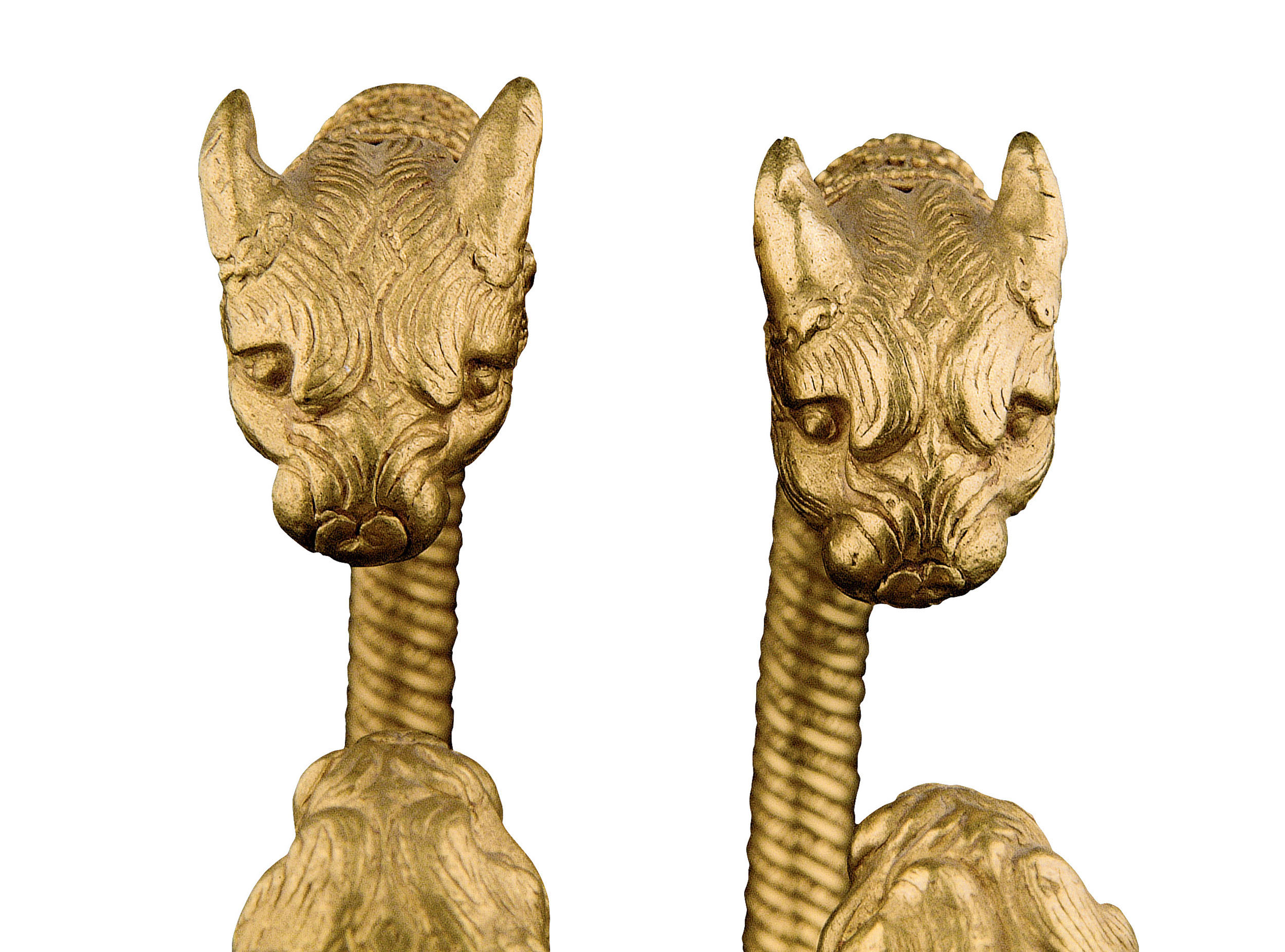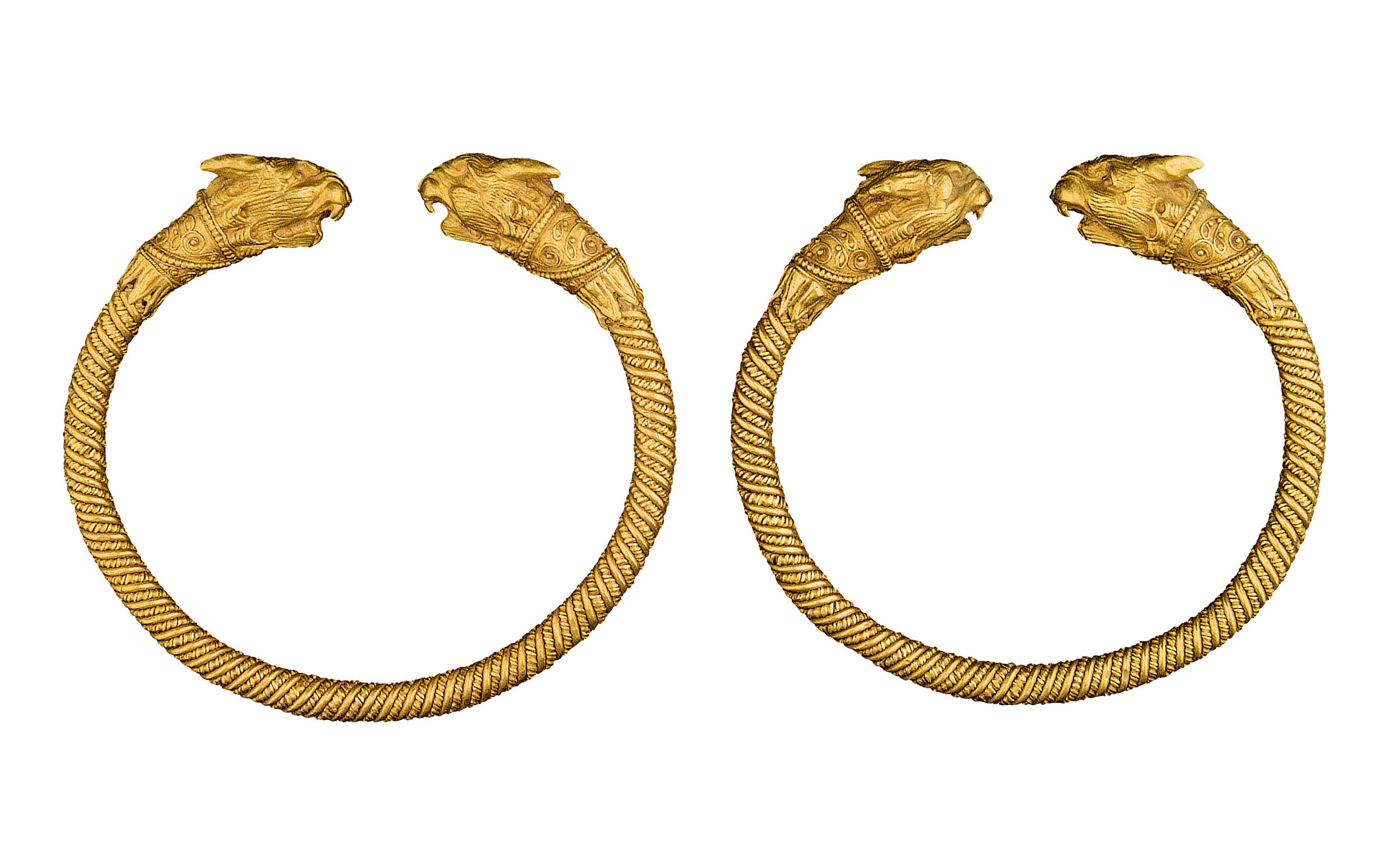



Τα κάθε βραχιόλι αποτελείται από κυλινδικό στέλεχος, τα άκρα του οποίου έχουν τη μορφή κεφαλής αιλουροειδούς (συνδυασμού λέοντα και του μυθικού γρύπα). Γύρω από το κυλινδρικό στέλεχος περιελίσσονται δύο χρυσά σύρματα, ένα απλό και ένα κοκκιδωτό. Οι κεφαλές έχουν κατασκευαστεί χωριστά από δύο τμήματα και έχουν προστεθεί στο στέλεχος. Τα σημεία προσαρμογής καλύπτονται από περίτεχνα δισκοσμητικά ελάσματα και τριγωνικά γλωσίδια.
Τα βραχιόλια με συμμετρικές ζωόμορφες απολήξεις (κεφαλές λεόντων κριών, φιδιών κ.ά) έλκουν την καταγωγή τους από την Ανατολή. Ήταν συνήθη στην τέχνη της Αχαιμενιδικής Περσίας και σταδιακά διαδόθηκαν σε όλη την ανατολική Μεσόγειο. Η κατασκευή τους απαιτούσε δεξιοτεχνία, καθώς συνδύαζε την σφυρηλάτηση με την συρματερή τεχνική και την κοκκίδωση, και μάλιστα σε πολύ μικρό μέγεθος.
ΔΗΜΟΣΙΕΥΣΗ
– Laffineur R. 1980. “ Collection Paul Canellopoulos (XV). Bijoux en or grecs et romains”, Bulletin de correspondance hellénique 104, 345-457, ειδ. 59-60.
– Σαραγά Ν. 2006. Λήμμα καταλόγου αρ. 144, στο Χωρέμη-Σπετσιέρη Α. – Ζαρκάδας Α. (επιμ.), Μουσείο Παύλου και Αλεξάνδρας Κανελλοπούλου. Αρχαία Τέχνη, Αθήνα, 230-231.